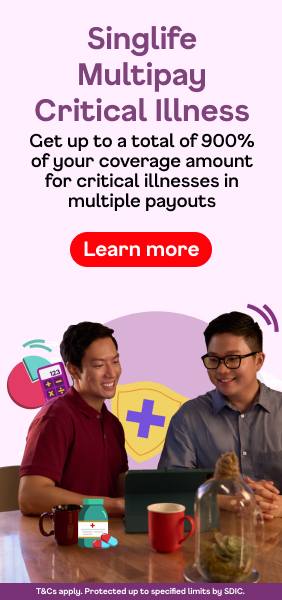You’ve heard of insuring yourself against the unexpected, but have you ever heard of paying attention to specific parts of yourself – whether organs or limbs – and keeping them more insured than others?
Top 10 body parts insured
According to a survey by QuickQuote1, the heart, eyes and legs are the three most insured body parts in America.
Specifically, the top 10 insured body parts are the heart, eyes, legs, arms, lungs, liver, ears, mouth, pancreas and sexual organs, with the eyes being the most important to the Silent Generation* (68.1%) and 49.2% of millennials valuing their hearts above all else.
*The Silent Generation is also known as the Traditionalist Generation, a Western demographic preceding the baby boomers, born from 1928 to 1945.
Celebrities who have their body parts insured
One group of people who tend to insure specific body parts is celebrities. Some of these famous names include:
- David Beckham: The world-famous footballer and dreamboat husband to Posh Spice had his legs insured at £100 million in 2006, breaking the record for the largest personal insurance policy in sporting history3 – a payout which thankfully never happened as he retired with his legs intact.
- America Ferrera: Her role in the hit tv series Ugly Betty earned her a USD$10 million insurance by Aquafresh White to protect her iconic smile2.
- Cristiano Ronaldo: Also a famous footballer, he has his legs insured for €100 million4 after a close call in 2009, where his leg was hurt during a match. The good news is, he recovered from the injury.
- Heidi Klum: The supermodel known for her iconic strut reportedly had her legs insured for USD$2 million5 by an undisclosed client. One of her legs cost more to insure due to a scar from her youth.
While it may seem incredulous, these famous figures (and their managing companies) depend heavily on specific body parts to maintain their livelihood. The insurance taken must be able to make up for any loss of income – temporarily or otherwise – should they lose use of these significant parts. And because these are high-earning people, such financial protection comes at a high price.
Staying whole
So, which body part would you insure if you had the choice? (As a writer, my eyes and hands make the top of my personal list!) Although insuring specific parts of yourself isn’t practised locally, there are other ways to insure yourself and protect your livelihood.
Regardless of which bits are more important to you when it comes to earning a living, keeping yourself entirely covered with insurance is crucial. In Singapore, the Work Injury Compensation Act (WICA) protects employees against fees incurred due to accidents at the workplace – providing medical leave, expenses and lump-sum compensation for permanent incapacity or death.
Key facts about WICA
Whether it’s temporary or permanent disability from an accident or injuries sustained from work, you never know when you might become incapacitated, resulting in a hit to your expenses or quality of life.
You may also be wondering if work accidents would qualify for the Total and Permanent Disability (TPD) benefits under your term or life insurance, however, not every accident results in total and permanent disability. As such, you might consider boosting your coverage to provide additional support in your time of need.
Key products to boost your coverage
* Activities of Daily Living (ADLs) are washing, toileting, feeding, dressing, transferring and walking or moving around.
To find out about the full benefits, read more about Singlife Disability Income and Singlife CareShield Standard & Plus.
Disability or incapacitation can be a devastating event for anyone to go through. If we consider the expenses or the loss of income because of the unthinkable, the need for protection becomes all too clear.
Always keep yourself covered – and we mean all of you, physically, mentally or financially.
Notes
As these policies has no savings or investment feature, there is no cash value if the policy ends or if the policy is terminated prematurely. Buying a health insurance policy that is not suitable for you may impact your ability to finance your future healthcare needs.
This advertisement has not been reviewed by the Monetary Authority of Singapore.
You need to have a basic CareShield Life (CSHL) or ElderShield (ESH) policy before purchasing Singlife CareShield Standard or Singlife CareShield Plus (“Supplements”).
Supplements purchased by CSHL policyholders are regulated under the CareShield Life and Long-term Care Act. Supplements purchased by ESH policyholders before the transfer of ESH to Government administration are considered ESH Supplements, which are regulated under the Central Provident Fund (Withdrawals for ElderShield Scheme) Regulations. After the transfer, they are considered CSHL Supplements, regulated under the CareShield Life and Long-Term Care Act.
1. Source: QuickQuote, “10 Common Body Parts You Can Insure”, accessed on 25 September 2023.
2. Source: TheRichest, “10 Celebrities Who Have Their Body Parts Insured”, accessed on 26 September 2023.
3. Source: Abbey Autoline, “The top 10 most expensive athlete insurance policies of all time,” accessed 26 September 2023
4. Source: Petra, “Body Part Insurance – Three Things You Need to Know,” accessed 29 September 2023





